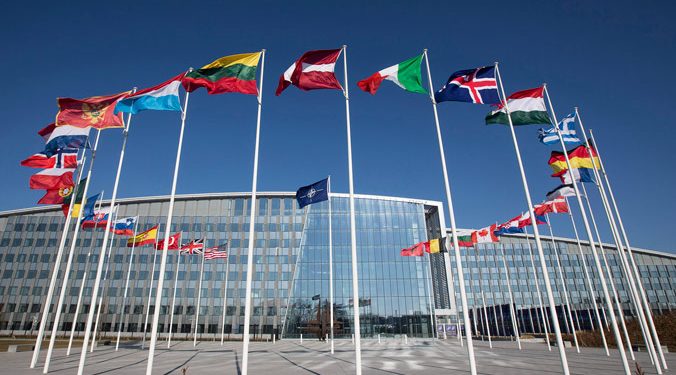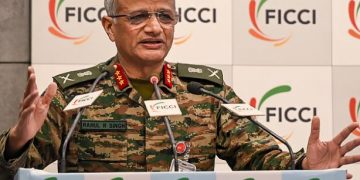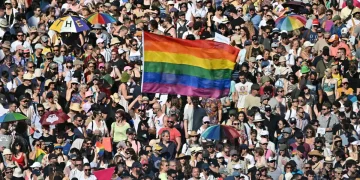Brussels: In an underground archive below NATO’s headquarters lies a key document that sets out the vision of both NATO and Russia about their future ties, as it was shaped almost a quarter of a century ago. The room is sealed. White gloves must be worn to handle the text.
“NATO and Russia do not consider each other as adversaries. They share the goal of overcoming the vestiges of earlier confrontation and competition and of strengthening mutual trust and cooperation,” reads the preamble of the NATO-Russia Founding Act, signed in May 1997.
Things looked brighter then, less than a decade after the Iron Curtain collapsed and relations between Moscow and the West had thawed. Today, with thousands of Ukrainians sheltering in bunkers across the country and with millions forced from their homes, the document appears to be a dead letter.
When the act was signed, the post-Cold War period was ushering in a time of defence spending cuts as the threat from Moscow receded. NATO and Russia made important pledges on arms control and improved transparency about their military activities.
Most importantly, they committed to limit the deployment of their forces in Europe.
On Wednesday, lamenting Russia’s “brutal invasion” of Ukraine, NATO Secretary-General Jens Stoltenberg said that Europe’s biggest land war in decades will “change our security environment” and will have “long-lasting consequences for our security, and for all NATO allies.”
In talks at NATO’s Brussels headquarters, US Defence Secretary Lloyd Austin and his counterparts are weighing what defences to set up on the organisation’s eastern flank, from Estonia in the north through Latvia, Lithuania and Poland down to Bulgaria and Romania on the Black Sea.
The aim is to deter President Vladimir Putin from ordering an invasion any of the 30 allies; not just for the duration of this war but for the next 5-10 years. Before launching it, Putin had demanded that NATO stop expanding and withdraw its forces from the east. The opposite is happening.
“We are reinforcing our collective defence – hundreds of thousands of troops on heightened alert, 100,000 US troops in Europe, and then 40,000 troops under direct NATO command, mostly in the eastern part of the alliance, supported by naval and air forces,” Stoltenberg said.
The ministers are expected to task NATO military commanders with drawing up options for stationing troops more permanently and in greater number in the east – unlike the rotating battle groups totaling around 5,000 troops that were deployed to the Baltic states and Poland in recent years.
Those options will be studied by NATO leaders at their next major summit in Madrid in June.
The opinion of US President Joe Biden and his NATO counterparts, who will also meet in Brussels next week, about the state of the NATO-Russia Founding Act could not be clearer.
In a statement last month, the leaders said that Russia’s actions are “a flagrant rejection of the principles enshrined in the NATO-Russia Founding Act: it is Russia that has walked away from its commitments under the Act.” “President Putin’s decision to attack Ukraine is a terrible strategic mistake, for which Russia will pay a severe price, both economically and politically, for years to come,” they said.
IANS






































